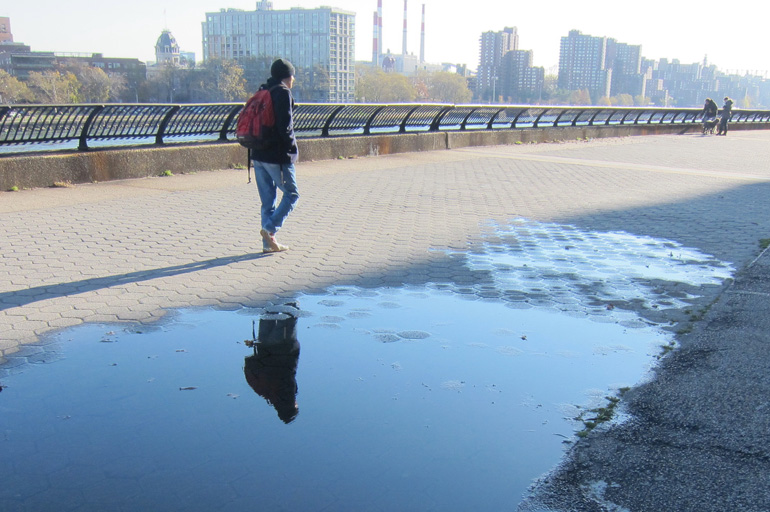Gotham Diary:
Vedic
19 November 2012
The next chapter in Wendy Doniger’s The Hindus will not be the death of me, but it will still be hard to get through. The sixteenth, it’s entitled, “Philosophical Feuds in South India and Kashmir: 500-1300 CE.” I’m not sure that I can absorb any further theological contortions. In the preceding chapter, it was explained that the Buddha was appropriated as an avatar of Vishnu, not because Brahmin writers intended to appropriate (and endorse) Buddhism, but, on the contrary, because this was a way of effecting the damnation of the antigods. (I’ll just leave it there.) The fact that the geographical extremities of India are mentioned in the coming chapter title suggests to me that Doniger is going to sweep up a few outlying matters of interest into a neat pile before moving on to Hindu relations with the Mughal emperors (in two chapters) and then with the British (two further chapters, which I read a while back, when I was sorely in need of a change of pace after learning, if that’s the word, about the Puranas.) If it weren’t for Doniger’s tart and witty writing, I should never have been able to get through her book, which has so generously assisted me with what I’m always declaring  my most important project to be: learning how ignorant I am.
Another chapter that I’ve read ahead to, “Hindus in America,” reminds me why I gave all things Indian a pass when I was growing up. Doniger is not writing about immigrants from the Subcontinent building respectable temples in the Midwest. No, she’s writing, rather, about such things as “the many porn stars who have taken the name of Kali, presumably in vain.” (Doniger kills me!) I didn’t know about the porn stars, but how well I remember Eleanor Bron as a priestess of Kali in Help! I am grateful for the innate tact that steered me away from dabbling in India in the Sixties and Seventies, when Western adventurers and journalists were so busy erecting a looking-glass version of it, while those who made an honest effort to be serious about the culture bogged down in economic analysis and social(ist) critique. Like China, only to a far milder degree, India in those days was veiled by the wishful thinking of its leaders, who wished to grow a self-contained economy with little or no outside investment. Now that all that has been abandoned, India looks much more like a country just like any other — see the fine story about the Chandha brothers, billionaire heirs to a sprawling business empire, who shot one another to death at one of their faux farmhouses outside of New Delhi the other day. Now that India has settled down, at least in everyone’s imagination, it is much more interesting to me. Â
Looking back to more recent times, when my interest in learning about India was taking root, I see that it was the Raj that attracted me, the strange (when you really look at it) experiment in which several thimbles-ful of Britons undertook to manage the broader affairs of a land of many millions. At first, the peoples ruled by the Raj were as opaque to me as they are to Forster’s Mrs Turton. By degrees, however, I noticed intriguing local colors, and along came fantastic writers like Pankaj Mishra, whose new book, From the Ruins of Empire, stirred me to read The Hindus.
Mishra also inspired me to see the famous trilogy that began Satyajit Ray’s filmmaking career. Yesterday, I watched Pather Panchali — for the first time, I’m embarrassed to say. Once again, though, I had to be glad that I’d waited, because the fecklessness of the Brahmin father was so much more intelligible with all that I’d learned from Doniger washing through my brain. (I’ll watch Aparajito and The World of Apu presently.) It’s a heavy and rather lowering movie (not least because it really was made on a shoestring, and not a very robust one), but I could see it as a story about one particular family in West Bengal, and not as an allegory of man’s inhumanity to man. Â
***
Â

